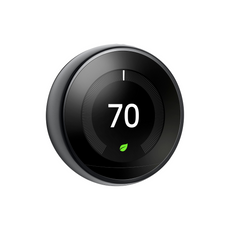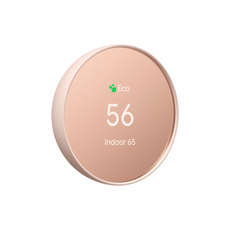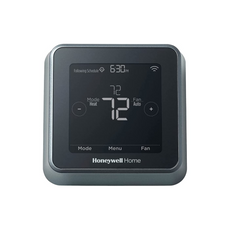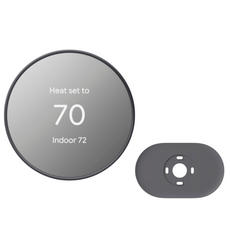
Solar Decathlon: The Skinny on the Latest Event
The Solar Decathlon has been on my radar since its inception in 2002. I have included profiles of Solar Decathlon houses in all my recent books and was honored to be a juror on this recent event in April 2021. It is an event I highly recommend to anyone interested in housing, solar energy, and new home technology.
Table of Contents
- What Is The Solar Decathlon?
- What Are The Goals Of The Solar Decathlon?
- What are the Judged Categories of the Solar Decathlon?
- What Is The History of the Solar Decathlon?
- What Teams Participated In the 2021 Solar Decathlon?
- Who Won the 2021 Solar Decathlon?
- What School Came Second in the 2021 Solar Decathlon?
- What School Came Third in the 2021 Solar Decathlon?
- What Is The Future of the Solar Decathlon?
What Is The Solar Decathlon?
The Solar Decathlon (SD) is a collegiate competition sponsored by the US Department of Energy and organized by the National Renewable Energy Laboratory. Houses are designed and built by students and faculty at universities in the United States and worldwide. Until this past event, homes were displayed at the SD event location and were open to the public. This year's event was virtual because of the pandemic. The goal for the teams is to design and build highly efficient and innovative houses while conserving water and powering the homes with renewable energy.
Over the past nineteen years, thousands of college students worldwide have designed and built SD houses that efficiently collect and convert sunlight into usable energy to compete in the event. During the in-person events, visitors tour the prefabricated houses, where student guides describe the mechanics, systems, and materials and explain why they chose those options. For this past event, the presentations were available online.

Related Products

Google Nest Learning Thermostat
In Stock
6 Colors

Google Nest Thermostat
In Stock
4 Colors

Emerson Sensi Wi-Fi Thermostat ST55U
Emerson
In Stock

Honeywell Home Lyric T5 Wi-Fi Smart Thermostat - RCHT8610WF2006
Honeywell
In Stock

Google Nest Thermostat w/ Trim Kit
In Stock
4 Colors

Honeywell Lyric T9 Smart Thermostat
Honeywell
In Stock

Emerson Sensi Touch Wi-Fi Thermostat, White
Emerson
In Stock

Emerson Sensi Touch Wi-Fi Thermostat, Black
Emerson
In Stock

Mysa Smart Thermostat for Air Conditioners
Mysa
In Stock

ecobee ecobee3 Lite Thermostat
ecobee
In Stock
What Are The Goals Of The Solar Decathlon?
The Solar Decathlon events help educate thousands of college students to consider the possibilities in designing energy and water-efficient houses using new, innovative technology. Many of the teams use these events to try and solve local and national issues such as the need for affordable housing, the preservation of water in arid areas, and the creation of housing for soldiers returning to this country with post-traumatic stress disorder (PTSD). The SD events have created a whole generation of more thoughtful and creative people in the construction industry.

What are the Judged Categories of the Solar Decathlon?
Several categories were judged in this past competition. They were:
- engineering,
- financial feasibility and affordability,
- resilience,
- architecture,
- market potential, and
- presentation.
A panel of judges rates each of the houses in each category. There are first, second, and third place winners overall and winners in all competition categories.

What Is The History of the Solar Decathlon?
At the first event in 2002, the houses were displayed on the National Mall in Washington DC. In the early days of the event, the houses were limited to an 800 square feet footprint, measured as a "solar footprint" or a vertical projection to the ground of the floor area, walls, and overhangs, resulting in reasonably small houses. In 2011, the size was changed to a 1,000 square feet limit. They now use a more common measuring method, calculated by ANSI-Z765, which is similar to how real estate agents calculate square footage. With the change in calculations, overhangs and non-conditioned spaces were not counted, which led to larger houses. More recently, the houses have been built locally, and the limit raised to 3,000 square feet. Most teams, however, still build homes closer to 1,000 than 3,000 square feet.
Since the initial event, future events took place in 2005, 2007, 2009, 2011, 2013, 2015, 2017, and 2021. The 2013 and 2015 events were held at the Orange County Great Park in Irvine, California. The 2017 event took place in Denver, Colorado, and the latest event was virtual. Since the initial event in the United States, SDs have been held in countries worldwide, in Europe, the Caribbean, China, Latin America, Africa, and the Middle East.
What Teams Participated In the 2021 Solar Decathlon?
Nine teams participated in the 2021 event. Unlike in past events, the houses remained in towns near to where the universities are located, rather than being transported to a shared location. Seven of the teams were in the United States, including Kansas State University, The University of Boulder, University of Oregon, Weber State University, University of Colorado, and the University of Nevada. International teams included Waterloo University in Ontario, Canada, and Hogeschool Utrecht University of Applied Sciences Utrecht in Utrecht, Netherlands.

Who Won the 2021 Solar Decathlon?
The first-place winner of the 2021 event was the University of Colorado in Boulder. The University team designed and built the SPARC house and accessory dwelling unit (ADU).

The team did extensive research in the community to better understand its housing needs and struggles. Only then did they set their goal to meet the challenge of providing much-needed affordable housing in this busy mountain resort town of Fraser, where the house is located. The team expects their design will be relevant in many other mountain resorts like this one. The team designed the ADU to meet the needs of employees who work at the town seasonally and need temporary and affordable housing. The ADU would also provide added income to the homeowner. With the high cost of housing in the area, it has been difficult for low- and middle-income residents, considered to be the backbone of this and other mountain resorts, to find affordable housing. This group includes teachers, small business owners, restaurant staff, resort employees, and others.
The team designed the house to maximize performance, limit its environmental impact and keep the operating costs down. To achieve these goals, the team designed the house with optimal orientation, a highly insulated envelope, natural daylighting and ventilation, high-efficiency HVAC equipment (including zone-based cold climate heat pumps), and maximum power point tracking on the solar panels. In addition, there are fewer windows on the north side of the house to minimize air loss and more windows on the south side to capture solar energy and lighting.
Because there are only about three months during the year when conditions allow for construction in this area, they chose a prefab, panelized system. Using a prefabricated system allowed the team to create a high-performance structure on a timely basis and within the short window of weather opportunity.
Along with their overall first place win, the team won the competitions for innovation, market potential, and architecture.

What School Came Second in the 2021 Solar Decathlon?
Coming in second place in the competition was the University of Waterloo in Ontario with their Team, Warrior Home. The team worked closely with the Chippewas of Nawash Indigenous community and Habitat for Humanity to build the first net-zero energy Habitat for Humanity home in an indigenous community in Canada.

The team members worked with the homeowners, volunteers, and the community to build a very innovative, efficient, low maintenance, and affordable single-family home. The house was designed for flexibility, so rooms can be converted to meet changing needs. They also added accessibility features, such as handrails and additional lighting, to accommodate physical and visual impairment users. With its net-zero design, energy usage is minimal. Advanced technology, such as smart thermostats, an air source heat pump, and a hybrid electric water heater tank, allows for thermal control of the enclosure.

The team upped the house's performance with more than typical insulation, triple-glazed windows with low-emissivity coatings to reduce solar heat gains, and an insulated concrete form foundation. This house can easily be replicated to meet the severe shortage of housing in the area. In addition, it is an excellent model for future energy-efficient construction in this community.

What School Came Third in the 2021 Solar Decathlon?
The third-place winner was the University of Nevada in Las Vegas' Mojave Bloom House. After extensive research, the UNLV team designed a house as a place of healing and relief for military veterans suffering from symptoms of post-traumatic stress disorder (PTSD).

The Mojave Bloom house was designed to address the needs of these returning military veterans, offering them an excellent place to heal. Some of the parameters the team considered were the need for privacy, social connection, control over sound, light, air, and other environmental conditions. Their goal was to help the veterans reintegrate themselves back into their past lives and reconnect effectively with family.

The teams studied the symptoms associated with PTSD and designed the house to address those issues specifically. It offers the individual residents the opportunity to adjust the conditions in the home to meet their unique needs. For example, if the resident wants more privacy, they can close off the courtyard gates. If they prefer to be more open to the world, they can open the gates and take advantage of the extensive glazing. Rolling shades at the three glazed sides of the courtyard allows the resident to adjust the light coming into the house - whether they want to sleep during the day or prefer a more light-filled environment.

The house is equipped with flexible and efficient systems for energy self-sufficiency, along with a high-efficiency ventilation system, an HVAC, and a battery backup system and noise reduction through its airtight material and efficient envelope. Native plantings around the house create a calm and healing atmosphere while requiring minimal watering.

A living green wall in the house's interior cools the dry air via evaporation, also providing a positive sensory stimulus.
The plan is for this house to be located permanently at the Las Vegas Community Healing Garden's Sanctuary of Healing.
These three houses and the additional six entries were built to high energy efficiency standards and designed to meet specific regional and resident needs. In addition to the advantages offered to the communities with these houses, the SD events have helped thousands of students become more aware of building methods that are less dependent on fossil fuel and with thoughtful, more sustainable technology.
What Is The Future of the Solar Decathlon?
The next Solar Decathlon event will be held from April 21st to 24th, 2023. Applications for the 2023 Build Challenge will open this summer. Homes will be built locally worldwide and open to their local communities for tours, likely in spring 2023. Winners will be announced at the 2023 Solar Decathlon Competition Event in Golden, Colorado.
In addition, a Solar Decathlon Virtual Village, and in-person tours local to each home, will be available.

Internationally, more events are planned, one of which will be in the Middle East with the Dubai Supreme Council of Energy, Dubai Electricity, and Water Authority. There is also a plan for Solar Decathlon China to occur in the Fall of 2021 in Zhangjiakou, Hebei Province. The next European event will be in Wuppertal, Germany, in September 2023. For additional information about international events, check out the International Solar Decathlon website.
I highly recommend that readers log on to the Solar Decathlon and check out future events virtually online or when the houses are in your local area. It is inspiring and educational experiencing the innovative and efficient dwellings built by the students involved in the SD.
Disclaimer: This article does not constitute a product endorsement however Rise does reserve the right to recommend relevant products based on the articles content to provide a more comprehensive experience for the reader.Last Modified: 2021-07-05T20:05:19+0000Article by:
Sheri Koones
Sheri Koones has written many books, the latest being Downsize: Living Large In a Small House which profiled 33 exceptional houses that show how small can be comfortable, practical, energy efficient—and beautiful. Sheri is a freelance writer and speaker. She has won the prestigious Robert Bruss Real Estate Book Award from NAREE in 2008, 2011, 2013 and 2017. Her next book will be released in 2022.